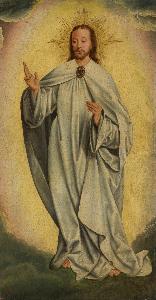Jan Joest Van Calcar
Jan Joest Van Calcar;Jan Joest Van Kalkar
Place: Kalkar Or Wesel
Death: 1519
Biography:
Life and Artistic Journey
Jan Joest Van Calcar, a German painter from either Kalkar or Wesel, remains an enigma in the art world despite his significant contributions to Early Netherlandish painting. Active during the 15th century, Van Calcar's life is shrouded in mystery, with his identity established only in 1874 by Jacob Anton Wolff and Oskar Eisenmann.
Artistic Style and Influences
Van Calcar's work is characterized by its exquisite transparency of coloring and fine detail, aligning him with the school of Scorel. Unlike his contemporaries, such as Jan van Eyck, Van Calcar's style is more subdued, yet his use of oil paint reflects a nascent understanding of the medium.
Notable Works and Legacy
Although only one artwork, The Last Judgment, is confidently attributed to Van Calcar, its impact on the development of Early Netherlandish painting is undeniable. This work, housed in St. Joriskerk, showcases Van Calcar's mastery of oil paint and his unique approach to religious themes.
- Influence on Early Netherlandish Painting: Van Calcar's innovative use of color and detail paved the way for future generations of Netherlandish artists.
- Contribution to the Development of Oil Painting: Van Calcar's work demonstrates an early understanding of oil paint, solidifying his place in the history of Early Netherlandish painting.
Further Exploration
For a deeper understanding of Jan Joest Van Calcar and his contemporaries, explore the following resources: * Jan van Eyck's biography on Wikioo.org, offering insights into the development of Early Netherlandish painting. * Early Netherlandish Painting on Wikipedia, providing a comprehensive overview of the period and its notable artists.
- Discover Van Calcar's The Last Judgment at St. Joriskerk, a testament to his innovative approach to religious art.
- Delve into the world of Early Netherlandish painting with Wikioo.org's extensive collection, featuring works from Jan van Eyck, Gerard David, and other pioneers of the period.
Conclusion
Jan Joest Van Calcar, though shrouded in mystery, has left an indelible mark on the history of Early Netherlandish painting. His innovative use of color and detail has influenced generations of artists, cementing his place as a pioneer in the development of this pivotal art movement.

